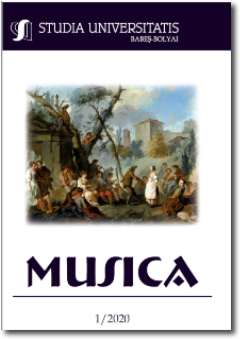THE SEMANTICS OF FRANZ LISZT’S PIANO THRENODIES WITHIN THE CONCEPT OF PASSION
THE SEMANTICS OF FRANZ LISZT’S PIANO THRENODIES WITHIN THE CONCEPT OF PASSION
Author(s): Alona BorshuliakSubject(s): Music
Published by: Studia Universitatis Babes-Bolyai
Keywords: threnody; phenomenon of passion; musical symbols; principle of thinking; semantic perspective;
Summary/Abstract: The interpretation of a musical work in modern performance arises as an acute problem that causes discussion. Thanks to the theory of analysis, it is possible to obtain a variety of analytical interpretations of a musical text. Semantic analysis appears as one of the main and most promising methods of decoding the semantic structures of the works of later Franz Liszt’s period. The composer creates a new genre – a mournful piece or a threnody, through which he was able to express painful feelings about tragic events. Liszt most actively uses the symbols of passion in the late period of creative life. Passion is interpreted as a phenomenon that takes over the properties of the genre of passions and transforms them into the principle of thinking, reasoning and dramatic art. In piano threnodies, musical-rhetorical pieces of passion express something secret, sacred, and sometimes tragic, and the symbols of the passion nature of the threnodies reflect Liszt’s tragic outlook in his late years. Consequently, immersion in the semantic depth of the threnodies in the context of the concept of passion allows both instrumentalist performers and teachers to reveal the multidimensionality of the complex of eternal problems in a new way that contribute to the birth of a new meaning.
Journal: Studia Universitatis Babes-Bolyai - Musica
- Issue Year: 65/2020
- Issue No: 1
- Page Range: 169-182
- Page Count: 14
- Language: English

